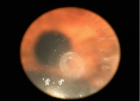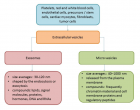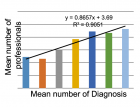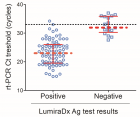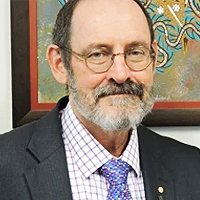Abstract
Review Article
Evolutive immunologic and toxicologic approach in some neuroinflammatory and degenerative disease like SM, DA, PD: Imaging and Brain Wasting System clearance efficacy
Mauro Luisetto*, Akram Muhamad, G Ibrahim, Behzad Nili Ahmadabadi, Farhan Ahmad Khan, Ahmed Yesvi Rafa and Oleg yurevich latyshev
Published: 30 April, 2020 | Volume 4 - Issue 1 | Pages: 005-013
In order to better understand some neurologic degenerative process is fundamental to use also an evolutionary approach of vertebrates and especially in mammalians. Aim of this work is to verify if an objective measure of brain wasting system can help in this kind of disease. Imaging can help in measuring efficiency of brains wasting system in the various subject. The brain glymphatic systems is well studied today but an accurate measure of the real efficiency of the system is needed. It is relevant so to submit to researcher a working methods strategy to measure this parameter to verify if possible, to use the brain glymphatic system as new therapeutics pathway.
Read Full Article HTML DOI: 10.29328/journal.icci.1001014 Cite this Article Read Full Article PDF
Keywords:
Evolutionary; Immunology; Imaging; Neurology; Pathology; Toxicology; New Therapeutic Strategies; DA, PD, ALS
References
- Luisetto M. Brain response in some systemic immune condition-Toxicological aspects. Insights Clin Cell Immunol. 2017; 1: 5-8.
- Luisetto M, Farhan AK, Ahmed YR, Behzad NA, Ghulam RM. Decussatio Pyramid and Optical Chiasm as an Interesting Example of Evolutionary Process Useful in Understanding Some Spinal Cord Phenomena? On J Neur & Br Disord. 2019; 2.
- Luisetto M, Khan FA, Muhamad A, Mashori GR, Ahmadabadi BN, et al. Brain washing systems and other circulating factors in some neurological condition like Parkinson (Pd) and vascular and diabetic dementia: How dynamics- saturation of clearance can act on toxic molecule? J Neurosci Neurol Disord. 2020; 4: 1-13.
- Luisetto M, et al. Brain and Immune System: KURU, a Strange Kind of Disease. An Endogenous Toxicological Process Like? EC Neurology 2018; 10: 7.
- Taoka T1, Naganawa S1. Glymphatic imaging using MRI. J Magn Reson Imaging. 2020; 51: 11-24. PubMed: https://www.ncbi.nlm.nih.gov/pubmed/31423710
- Davoodi BE1, Ding G, Zhang L, Li Q, Li L, et al. Modeling glymphatic system of the brain using MRI. Neuroimage. 2019; 188: 616-627. PubMed: https://www.ncbi.nlm.nih.gov/pubmed/30578928
- Per KE, Svein SV, Kyrre EE, Geir R. Magnetic resonance imaging provides evidence of glymphatic drainage from human brain to cervical lymph nodes Sci Rep. 2018; 8: 7194. PubMed: https://www.ncbi.nlm.nih.gov/pubmed/29740121
- Pedro JGR, Alberto J, Espay. Parkinson Disease: An Evolutionary Perspective image. Front Neurol. 2017.
- Vernier P1, Moret F, Callier S, Snapyan M, Wersinger C, et al. The degeneration of dopamine neurons in Parkinson's disease: insights from embryology and evolution of the mesostriatocortical system. Acad Sci. 2004; 1035: 231-249.
- Wenyu D, Crystal L, Carlos P, Jeffrey R. Muneeb A, et al. Quantitative imaging of the clearance systems in the eye and the brain. Quant Imaging Med Surg. 2020; 10: 1-14. PubMed: https://www.ncbi.nlm.nih.gov/pubmed/31956524
- Abbott NJ. Blood–brain barrier structure and function and the challenges for CNS drug delivery. Journal of inherited metabolic disease. 2013; 36: 437-449.
- Abbott NJ. Patabendige AA, Dolman DE, Yusof SR, Begley DJ. Structure and function of the blood–brain barrier. Neurobiology of disease. 2010; 37, 13-25.
- Achariyar TM, Li B, Peng W, Verghese PB, Shi Y, et al. Glymphatic distribution of CSF-derived apoE into brain is isoform specific and suppressed during sleep deprivation. Molecular neurodegeneration. 2016; 11: 74.
- Brinker T, Stopa E, Morrison J, Klinge P. A new look at cerebrospinal fluid circulation. Fluids and Barriers of the CNS, 2014; 11: 10. PubMed: https://www.ncbi.nlm.nih.gov/pubmed/24817998
- Damkier HH Brown PD, Praetorius J. Cerebrospinal fluid secretion by the choroid plexus. Physiological reviews. 2013; 93: 1847-1892.
- Davson H, Segal MB. Physiology of the CSF and blood-brain barriers. Boca Raton. 1996; 1.
- Del Zoppo GJ, Moskowitz M, Nedergaard M. The neurovascular unit and responses to ischemia. Elsevier. 2016; 90-101.
- Di Terlizzi R, Platt S. The function, composition and analysis of cerebrospinal fluid in companion animals: Part I–Function and composition. The Veterinary Journal. 2006; 172:.422-431.
- Engelhardt B, Ransohoff RM. Capture, crawl, cross: The T cell code to breach the blood brain barriers. Trends in immunology. 2012; 33: 579-589.
- Hladky SB, Barrand MA. Fluid and ion transfer across the blood–brain and blood–cerebrospinal fluid barriers; a comparative account of mechanisms and roles. Fluids and Barriers of the CNS. 2016; 13: 19. PubMed: https://www.ncbi.nlm.nih.gov/pubmed/27799072
- Iliff JJ, Lee H, Yu M, Feng T, Logan J, Nedergaard M. Brain-wide pathway for waste clearance captured by contrast-enhanced MRI. The Journal of clinical investigation. 2013; 123: 1299-1309.
- Iliff JJ, Wang M, Liao Y, Plogg BA, Peng W, et al. A paravascular pathway facilitates CSF flow through the brain parenchyma and the clearance of interstitial solutes, including amyloid β. Science translational medicine. 2012; 4: 147ra111-147ra111.
- Jessen NA, Munk ASF, Lundgaard I, Nedergaard M. The glymphatic system: a beginner’s guide. Neurochemical research. 2015; 40: 2583-2599.
- Johnston M, Zakharov A, Papaiconomou C, Salmasi G, Armstrong D. Evidence of connections between cerebrospinal fluid and nasal lymphatic vessels in humans, non-human primates and other mammalian species. Cerebrospinal fluid research. 2004; 1: 2.
- Koh L, Zakharov A, Johnston M. Integration of the subarachnoid space and lymphatics: is it time to embrace a new concept of cerebrospinal fluid absorption? Cerebrospinal fluid research. 2005; 2:.6.
- Kress BT, Iliff JJ, Xia M, Wang M, Wei HS, et al. Impairment of paravascular clearance pathways in the aging brain. Annals of neurology. 2014; 76: 845-861.
- Kulik T, Kusano Y, Aronhime S, Sandler AL, Winn HR. Regulation of cerebral vasculature in normal and ischemic brain. Neuropharmacology. 2008; 55: 281-288.
- Mathiisen TM, Lehre KP, Danbolt NC, Ottersen OP. The perivascular astroglial sheath provides a complete covering of the brain microvessels: an electron microscopic 3D reconstruction. Glia. 2010; 58: 1094-1103.
- Murtha LA, Yang Q, Parsons MW, Levi CR, Beard DJ, et al. Cerebrospinal fluid is drained primarily via the spinal canal and olfactory route in young and aged spontaneously hypertensive rats. Fluids and Barriers of the CNS. 2014; 11: 12.
- Nedergaard M. Garbage truck of the brain. Science. 2013; 340: 1529-1530.
- Neuwelt EA, Bauer B, Fahlke C, Fricker G, Iadecola C, et al. Engaging neuroscience to advance translational research in brain barrier biology. Nature Reviews Neuroscience. 2011; 12: 169.
- Neuwelt EA. Mechanisms of disease: the blood-brain barrier. Neurosurgery. 2004; 54: 131-142.
- Pizzo ME, Thorne RG. The extracellular and perivascular spaces of the brain. In Brain edema Academic Press. 2017; 105-127.
- Prince EA, Ahn SH. Basic vascular neuroanatomy of the brain and spine: what the general interventional radiologist needs to know. In Seminars in interventional radiology. Thieme Medical Publishers. 2013; 30: 234-239.
- Rennels ML, Gregory TF, Blaumanis OR, Fujimoto K, Grady PA. Evidence for a ‘paravascular’fluid circulation in the mammalian central nervous system, provided by the rapid distribution of tracer protein throughout the brain from the subarachnoid space. Brain research. 1985; 326: 47-63. PubMEd: https://www.ncbi.nlm.nih.gov/pubmed/3971148
- Rennels ML, Blaumanis OR, Grady PA. Rapid solute transport throughout the brain via paravascular fluid pathways. Advances in neurology. 1990; 52: 431-439.
- Syková E, Nicholson C. Diffusion in brain extracellular space. Physiological reviews. 2008; 88: 1277-1340.
- Tait MJ, Saadoun S, Bell BA, Papadopoulos MC. Water movements in the brain: role of aquaporins. Trends in neurosciences. 2008; 31: 37-43. PubMed: https://www.ncbi.nlm.nih.gov/pubmed/18054802
- Thorne RG, Nicholson C. in vivo diffusion analysis with quantum dots and dextrans predicts the width of brain extracellular space. Proceedings of the National Academy of Sciences. 2006; 103: 5567-5572.
- Thorne RG. Primer on central nervous system structure/function and the vasculature, ventricular system, and fluids of the brain. Drug Delivery to the Brain. Springer. 2014; 685-706.
- Thrane AS, Thrane VR, Nedergaard M. Drowning stars: reassessing the role of astrocytes in brain edema. Trends in neurosciences. 2014; 37: 620-628.
- Thrane VR, Thrane AS, Plog BA, Thiyagarajan M, Iliff JJ, et al. Paravascular microcirculation facilitates rapid lipid transport and astrocyte signaling in the brain. Scientific reports. 2013; 3: 2582.
- Trevaskis NL, Kaminskas LM, Porter CJ. From sewer to saviour—targeting the lymphatic system to promote drug exposure and activity. Nature Reviews Drug Discovery. 2015; 14: 781-803.
- Xie L, Kang H, Xu Q, Chen MJ, Liao Y, et al. Sleep drives metabolite clearance from the adult brain. Science. 2013; 342: 373-377.
- Zhang ET, Inman CB, Weller RO. Interrelationships of the pia mater and the perivascular (Virchow-Robin) spaces in the human cerebrum. Journal of anatomy. 1990; 170: 111.
- Zhao Z, Nelson AR, Betsholtz C, Zlokovic BV. Establishment and dysfunction of the blood-brain barrier. Cell. 2015; 163: 1064-1078. PubMed: https://www.ncbi.nlm.nih.gov/pubmed/26590417
- Zlokovic BV. Neurovascular pathways to neurodegeneration in Alzheimer's disease and other disorders. Nature Reviews Neuroscience. 2011; 12: 723.
- Luisetto M, Ahmadabadi BN, Rafa AY, Sahu RK, Cabianca L, et al. The turing machine theory for some spinal cord and brain condition, A toxicological - antidotic depurative approach. J Neurosci Neurol Disord. 2019; 3: 102-134.
- Luisetto Mauro, Ibrahim G, Oleg Latyschev, et al. The Evolution of the Nervous System as Model for Search New Pharmacological Strategies in Human Neurological Condition. American Journal of Biomedical Science & Research. 2019; 5.
- Muhammad Shehzad Khan. Glymphatic clearance of simulated silicon dispersion in mouse brain analyzed by laser induced breakdown spectroscopy. Helion. 2020; 6.
Figures:
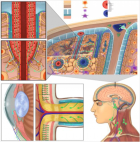
Figure 1

Figure 2

Figure 3

Figure 4
Similar Articles
-
Evolutive immunologic and toxicologic approach in some neuroinflammatory and degenerative disease like SM, DA, PD: Imaging and Brain Wasting System clearance efficacyMauro Luisetto*,Akram Muhamad,G Ibrahim,Behzad Nili Ahmadabadi,Farhan Ahmad Khan,Ahmed Yesvi Rafa,Oleg yurevich latyshev. Evolutive immunologic and toxicologic approach in some neuroinflammatory and degenerative disease like SM, DA, PD: Imaging and Brain Wasting System clearance efficacy. . 2020 doi: 10.29328/journal.icci.1001014; 4: 005-013
Recently Viewed
-
Metabolic syndrome: A case reportDragan Klaric,Marta Martinis*,Marta Klaric. Metabolic syndrome: A case report. Ann Clin Endocrinol Metabol. 2021: doi: 10.29328/journal.acem.1001022; 5: 031-035
-
Hypercalcaemic Crisis Associated with Hyperthyroidism: A Rare and Challenging PresentationKarthik Baburaj*, Priya Thottiyil Nair, Abeed Hussain, Vimal MV. Hypercalcaemic Crisis Associated with Hyperthyroidism: A Rare and Challenging Presentation. Ann Clin Endocrinol Metabol. 2024: doi: 10.29328/journal.acem.1001029; 8: 001-003
-
Evaluation of novel culture media prepared from plant substrates for isolation and identification of Cryptococcus Neoformans Species ComplexEllabib M*,Krema ZA,Mokthar ES,El Magrahi HS,Eshwika A,Cogliati M. Evaluation of novel culture media prepared from plant substrates for isolation and identification of Cryptococcus Neoformans Species Complex. Int J Clin Microbiol Biochem Technol. 2018: doi: 10.29328/journal.ijcmbt.1001002; 1: 009-013
-
A Review on filaricidal activity of phytochemical extracts against filariasis and the Parasites Genomic DiversityAM Gumel*,MM Dogara. A Review on filaricidal activity of phytochemical extracts against filariasis and the Parasites Genomic Diversity. Int J Clin Microbiol Biochem Technol. 2018: doi: 10.29328/journal.ijcmbt.1001004; 1: 024-032
-
Trends of Antibiotic Resistance among Uropathogens in Medical vs. Non-Medical Departments of Al-Shifa Medical Complex in Gaza Strip: A Retrospective, Cross-Sectional StudyKhaled Alkhodari*, Yasmin Al-Shurafa, Hammam AL-louh, Rafat Lubbad. Trends of Antibiotic Resistance among Uropathogens in Medical vs. Non-Medical Departments of Al-Shifa Medical Complex in Gaza Strip: A Retrospective, Cross-Sectional Study. Int J Clin Microbiol Biochem Technol. 2024: doi: 10.29328/journal.ijcmbt.1001028; 7: 001-005
Most Viewed
-
Impact of Latex Sensitization on Asthma and Rhinitis Progression: A Study at Abidjan-Cocody University Hospital - Côte d’Ivoire (Progression of Asthma and Rhinitis related to Latex Sensitization)Dasse Sery Romuald*, KL Siransy, N Koffi, RO Yeboah, EK Nguessan, HA Adou, VP Goran-Kouacou, AU Assi, JY Seri, S Moussa, D Oura, CL Memel, H Koya, E Atoukoula. Impact of Latex Sensitization on Asthma and Rhinitis Progression: A Study at Abidjan-Cocody University Hospital - Côte d’Ivoire (Progression of Asthma and Rhinitis related to Latex Sensitization). Arch Asthma Allergy Immunol. 2024 doi: 10.29328/journal.aaai.1001035; 8: 007-012
-
Causal Link between Human Blood Metabolites and Asthma: An Investigation Using Mendelian RandomizationYong-Qing Zhu, Xiao-Yan Meng, Jing-Hua Yang*. Causal Link between Human Blood Metabolites and Asthma: An Investigation Using Mendelian Randomization. Arch Asthma Allergy Immunol. 2023 doi: 10.29328/journal.aaai.1001032; 7: 012-022
-
An algorithm to safely manage oral food challenge in an office-based setting for children with multiple food allergiesNathalie Cottel,Aïcha Dieme,Véronique Orcel,Yannick Chantran,Mélisande Bourgoin-Heck,Jocelyne Just. An algorithm to safely manage oral food challenge in an office-based setting for children with multiple food allergies. Arch Asthma Allergy Immunol. 2021 doi: 10.29328/journal.aaai.1001027; 5: 030-037
-
Snow white: an allergic girl?Oreste Vittore Brenna*. Snow white: an allergic girl?. Arch Asthma Allergy Immunol. 2022 doi: 10.29328/journal.aaai.1001029; 6: 001-002
-
Cytokine intoxication as a model of cell apoptosis and predict of schizophrenia - like affective disordersElena Viktorovna Drozdova*. Cytokine intoxication as a model of cell apoptosis and predict of schizophrenia - like affective disorders. Arch Asthma Allergy Immunol. 2021 doi: 10.29328/journal.aaai.1001028; 5: 038-040

If you are already a member of our network and need to keep track of any developments regarding a question you have already submitted, click "take me to my Query."






